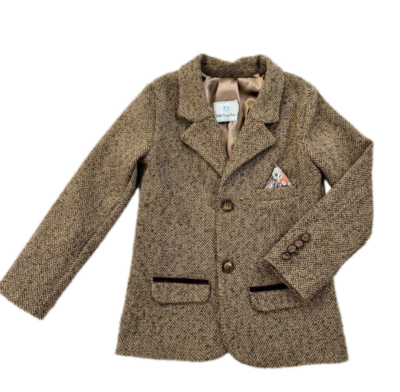Eye on Small Business: Petite Maison Kids, Greenwich

Established in 2018, Petite Maison Kids was inspired by the timeless elegance of European traditions and “the love a parent feels when dressing their child,” its founder, Katerina Azarova, told the Westfair Business Journal.
Age 9, Azarova moved with her famly from Kyiv, Ukraine, to Brooklyn. Learning a new language, navigating a new culture and starting from scratch were challenging, she said, but her parents were determined to create a better life. “Their resilience shaped who I am today and gave me the drive to pursue my dreams.”
Those dreams led to medicine and to Azarova becoming a neurosurgical physician assistant, a job she found incredibly rewarding. It taught her “discipline, attention to detail and the importance of precision” – all skills, she said, which have carried over, perhaps not surprisingly, to her role as a designer. That transition happened when Azarova had children of her own, when she felt the market was missing something when it came to children’s fashion.
That’s when the idea for Petite Maison Kids came to her. “When I started designing children’s clothing, I received really positive feedback and it made me realize I had a talent for it. But it didn’t happen overnight.” Azarova continued working as a neurosurgical assistant for two years while running Petite Maison Kids from home in the early stages. Eventually, as the brand grew and started to gain more recognition, with a new brick-and-mortar store at 71 Greenwich Ave. – she had moved to Greenwich when she met her husband – Azarova was able to devote herself to it full-time and focus entirely on building the business.
Starting and growing Petite Maison Kids had come with its fair share of challenges, Azarova said, adding that figuring out how to scale while staying true to your values had required careful planning and adaptation.
But in sticking to her guns, she may have inadvertently tapped into a growing trend in which the global kids’ luxury apparel market is currently worth an annual $184.30 billion, according to a 2023 “360 Market Updates” report, and is anticipated to rise “at a considerable rate” over the next seven years.
Without formal training when she first started designing, she said, it was more about following her instincts and learning through experimentation. She focused a lot on the fit and understanding the design aspects that were crucial for children’s clothing.

From the start, Azarova had a clear vision of the kind of clothes she wanted to design. Her customers, she said, valued quality over quantity and want their children to wear pieces that “not only look beautiful but also tell a story of craftsmanship and care.”
Commenting on the benefits of a brick-and-mortar store over online shopping (Petite Maison Kids also has an excellent website), Azarova said she believed that having a physical store allowed customers to experience the brand in a personal way. “They can touch and feel the fabrics, try on the clothes and truly appreciate the craftsmanship.” Plus, a brick-and-mortar store can serve as a community hub where parents can gather, share experiences and enjoy special events.
One of those events was a recent fashion show. “It was such a joy to see our little customers walking the runway in our latest collection, showcasing their unique personalities. The atmosphere was filled with excitement, and families loved coming together to support the kids.”
Asked if she had any fashion tips for the upcoming winter season, Azarova was enthusiastic. “Absolutely,” she said. “When it comes to creating a chic winter wardrobe for both girls and boys, I love a beautiful, tailored wool coat.” She added that Petite Maison Kids designed a new style every year. “A well-fitted coat is a timeless piece that every child should have to make their winter wardrobe chic.”